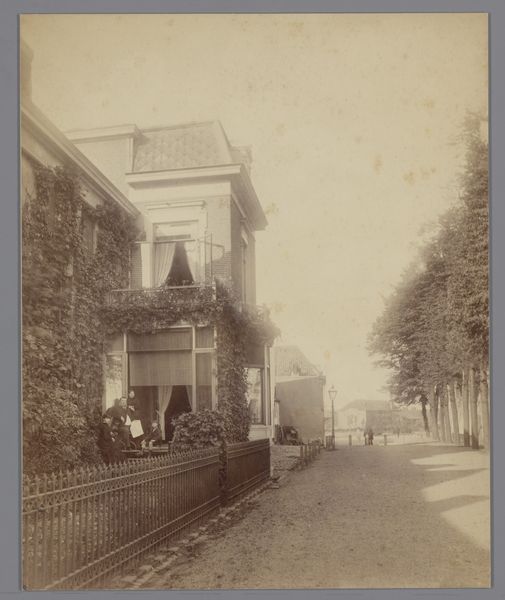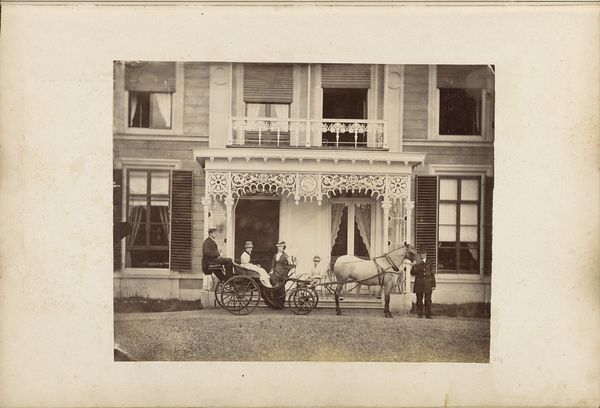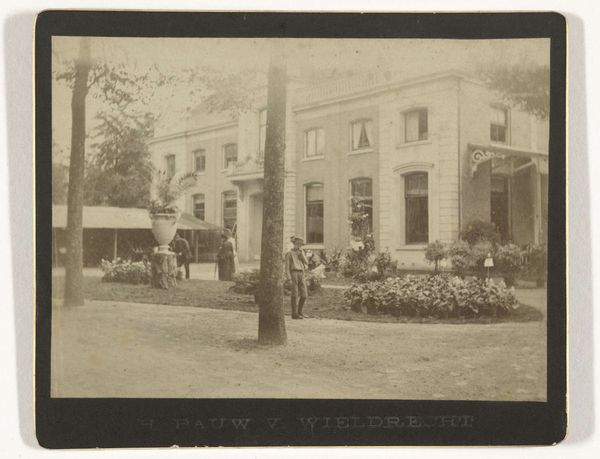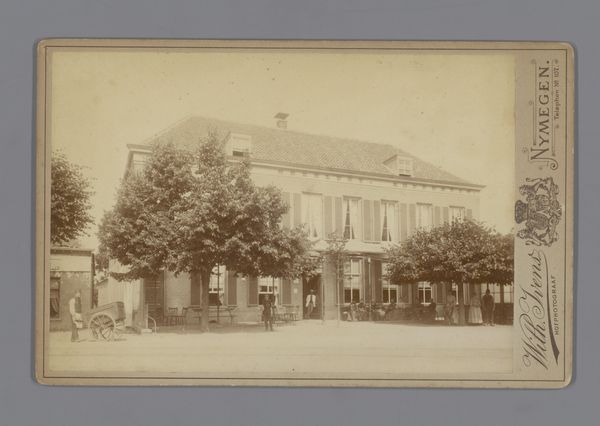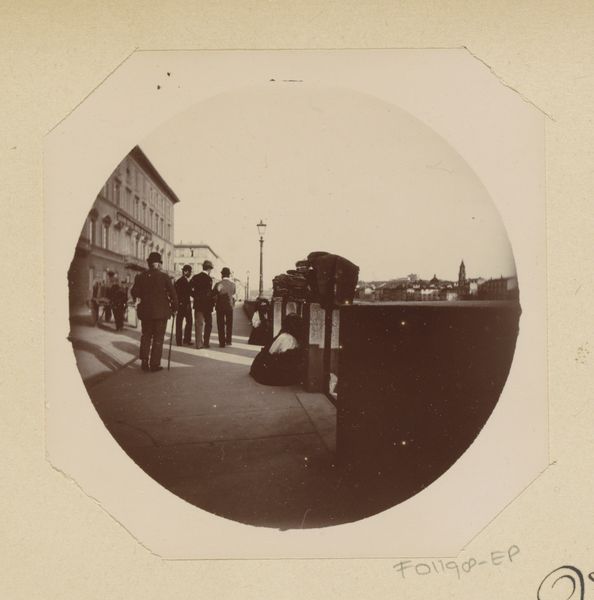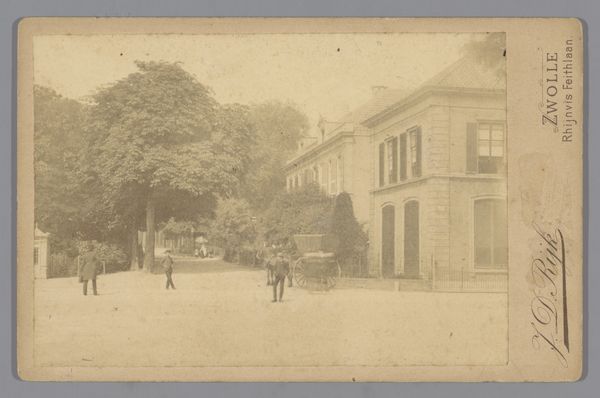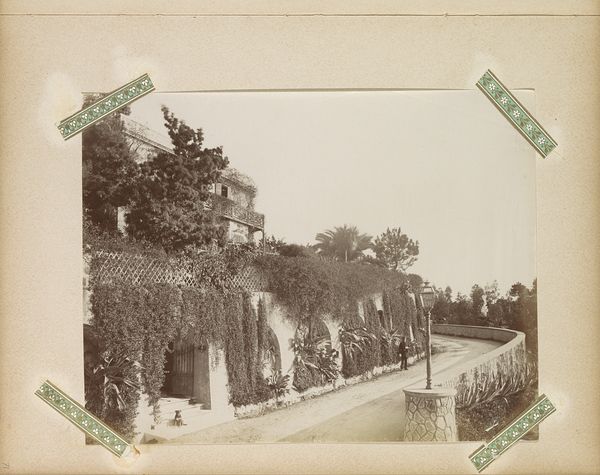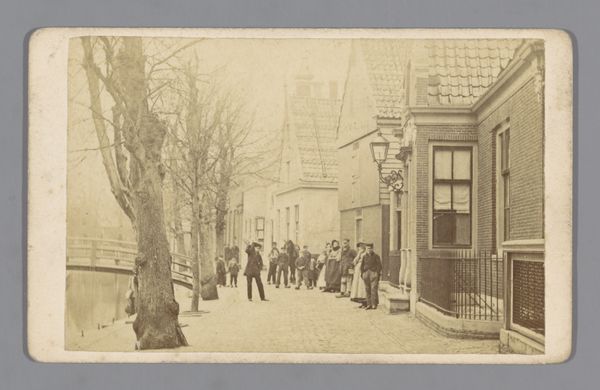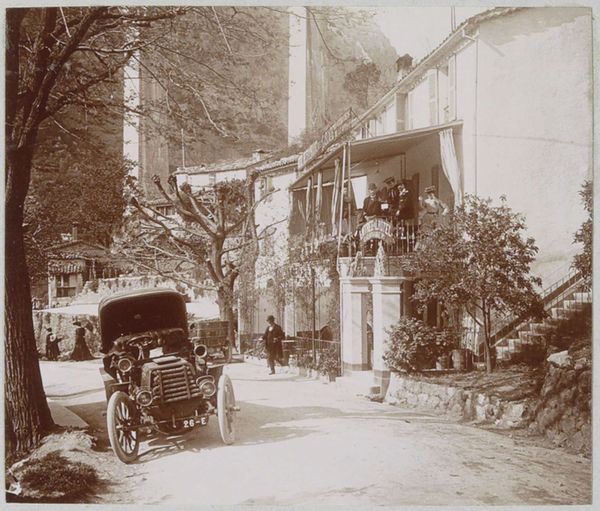
Negen jonge mannen op het erf bij een huis, op de voorgrond een amateurfotograaf c. 1890 - 1910
0:00
0:00
photography
#
portrait
#
pictorialism
#
landscape
#
street-photography
#
photography
#
group-portraits
#
genre-painting
#
realism
Dimensions: height 82 mm, width 113 mm, height 114 mm, width 146 mm
Copyright: Rijks Museum: Open Domain
Editor: Here we have an early photograph by G.J. Niekerk, titled "Negen jonge mannen op het erf bij een huis, op de voorgrond een amateurfotograaf," dating from around 1890 to 1910. It shows a group of men outside a house, and I’m immediately struck by how staged it feels, despite its being street photography. What do you see in this image? Curator: I see a moment caught in the complex intersection of class, technology, and representation. This photograph, likely commissioned, portrays these young men—are they friends, colleagues, or members of an association? The very act of being photographed was still relatively novel, marking a shift in how people saw themselves and wished to be seen. Note the photographer being photographed – who documents the documentarian? Editor: That's a good point. There's definitely a performative aspect to it. They're all dressed up, posing, aware of the camera, and therefore aware of how they will be perceived. It's not as candid as I thought! Curator: Precisely. It's about constructing a narrative. Consider the historical context. What societal roles and expectations are being reinforced, or perhaps challenged, through this carefully arranged scene? Does it speak to emerging middle-class aspirations, male camaraderie, and the growing accessibility of photographic technology? Editor: So, it’s not just a picture of some guys, but a window into social dynamics and power structures of the time? It also speaks to ideas of who is behind the camera? Curator: Absolutely. The image becomes a tool for understanding social identities, desires, and the narratives individuals and groups sought to project. Reflect also, on who is missing from the image. Editor: That really changes how I see it. I thought it was just a glimpse into the past, but now I realize it’s a constructed image, telling a very specific story, which makes me want to understand that story even more. Curator: And questioning who gets to tell it.
Comments
No comments
Be the first to comment and join the conversation on the ultimate creative platform.

